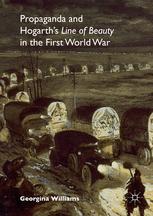

Most ebook files are in PDF format, so you can easily read them using various software such as Foxit Reader or directly on the Google Chrome browser.
Some ebook files are released by publishers in other formats such as .awz, .mobi, .epub, .fb2, etc. You may need to install specific software to read these formats on mobile/PC, such as Calibre.
Please read the tutorial at this link: https://ebookbell.com/faq
We offer FREE conversion to the popular formats you request; however, this may take some time. Therefore, right after payment, please email us, and we will try to provide the service as quickly as possible.
For some exceptional file formats or broken links (if any), please refrain from opening any disputes. Instead, email us first, and we will try to assist within a maximum of 6 hours.
EbookBell Team

4.7
86 reviewsPropaganda and Hogarth’s ‘Line of Beauty’ in the First World War assesses the literal and metaphoric connotations of movement in William Hogarth’s eighteenth-century theory of a ‘line of beauty’, and subsequently employs it as a mechanism by which the visual propaganda of this era can be innovatively explored. Hogarth’s belief that this line epitomises not only movement, but movement at its most beautiful, creates conditions of possibility whereby the construct can be elevated from traditional analyses and consequently utilised to examine movement in artworks from both literal and metaphorical perspectives. Propagandist promotion of an alternate reality as a challenge to a current ‘real’ lends itself to these dual viewpoints; the early years of the twentieth century saw growth in the advertising of conflict via the pictorial poster, instigating intentionally or otherwise an aesthetic response from soldier-artists embroiled on the battlefields. The ‘line of beauty’ therefore serves as a productive mechanism by which this era of propaganda art can be appraised.